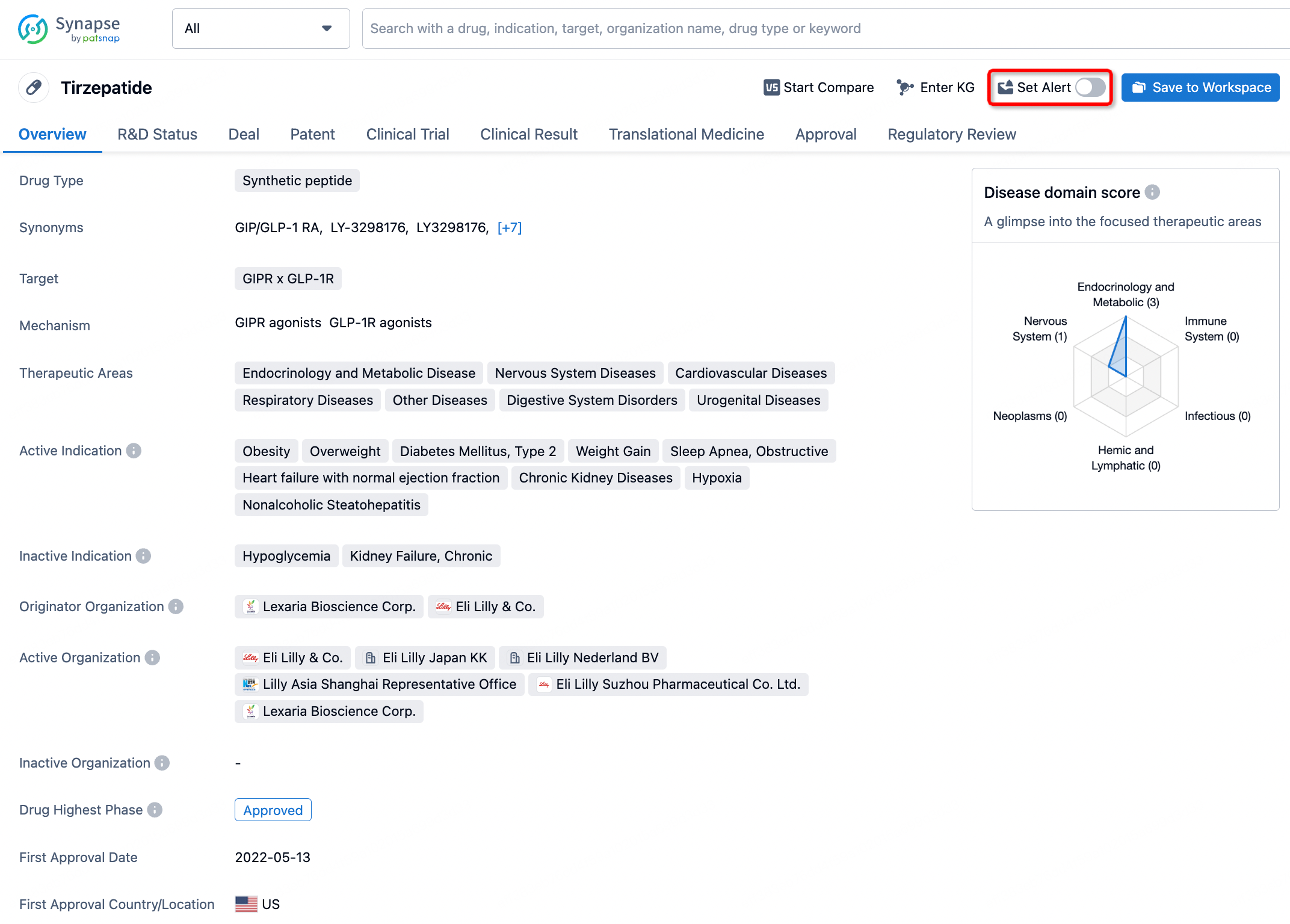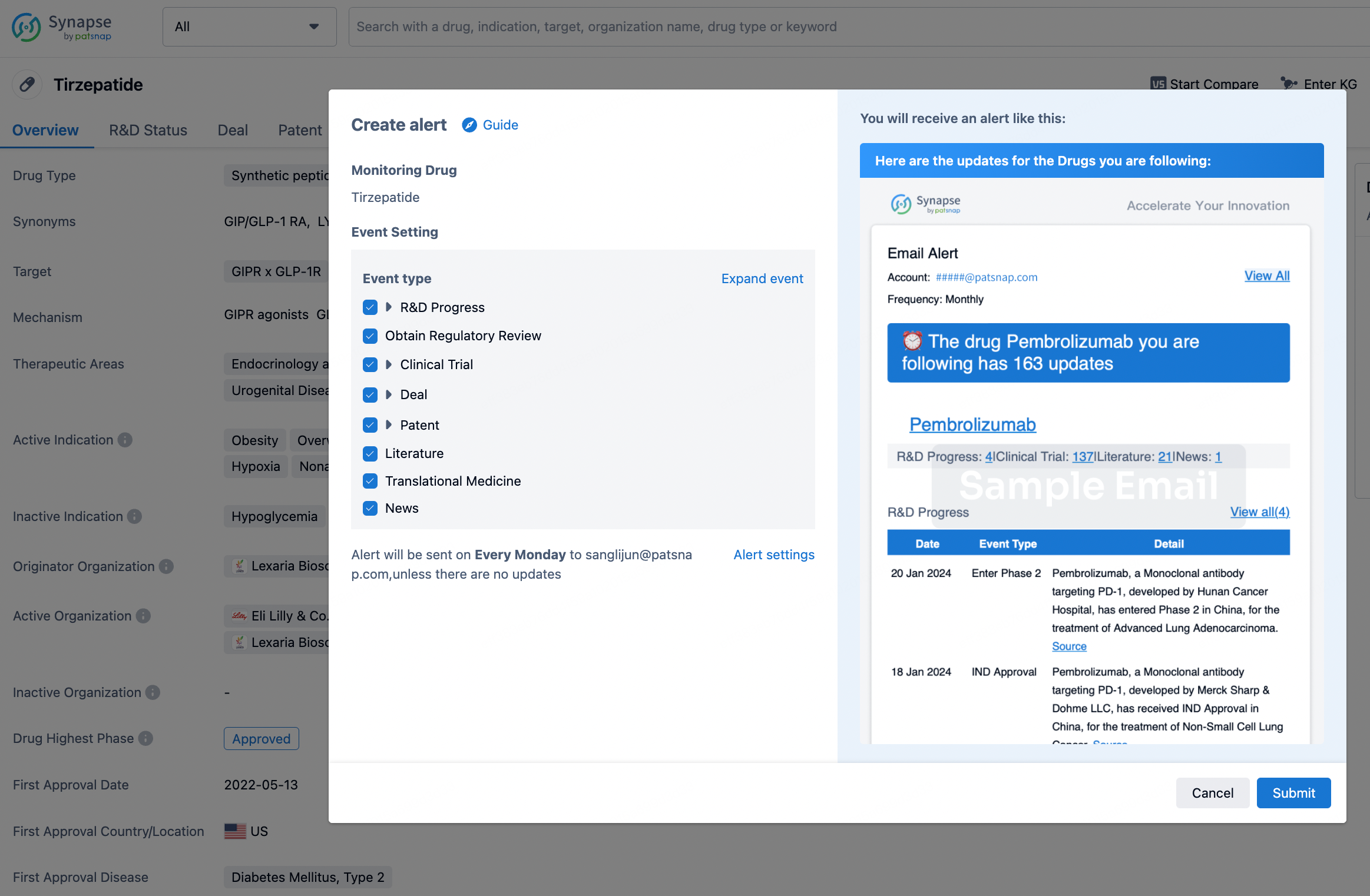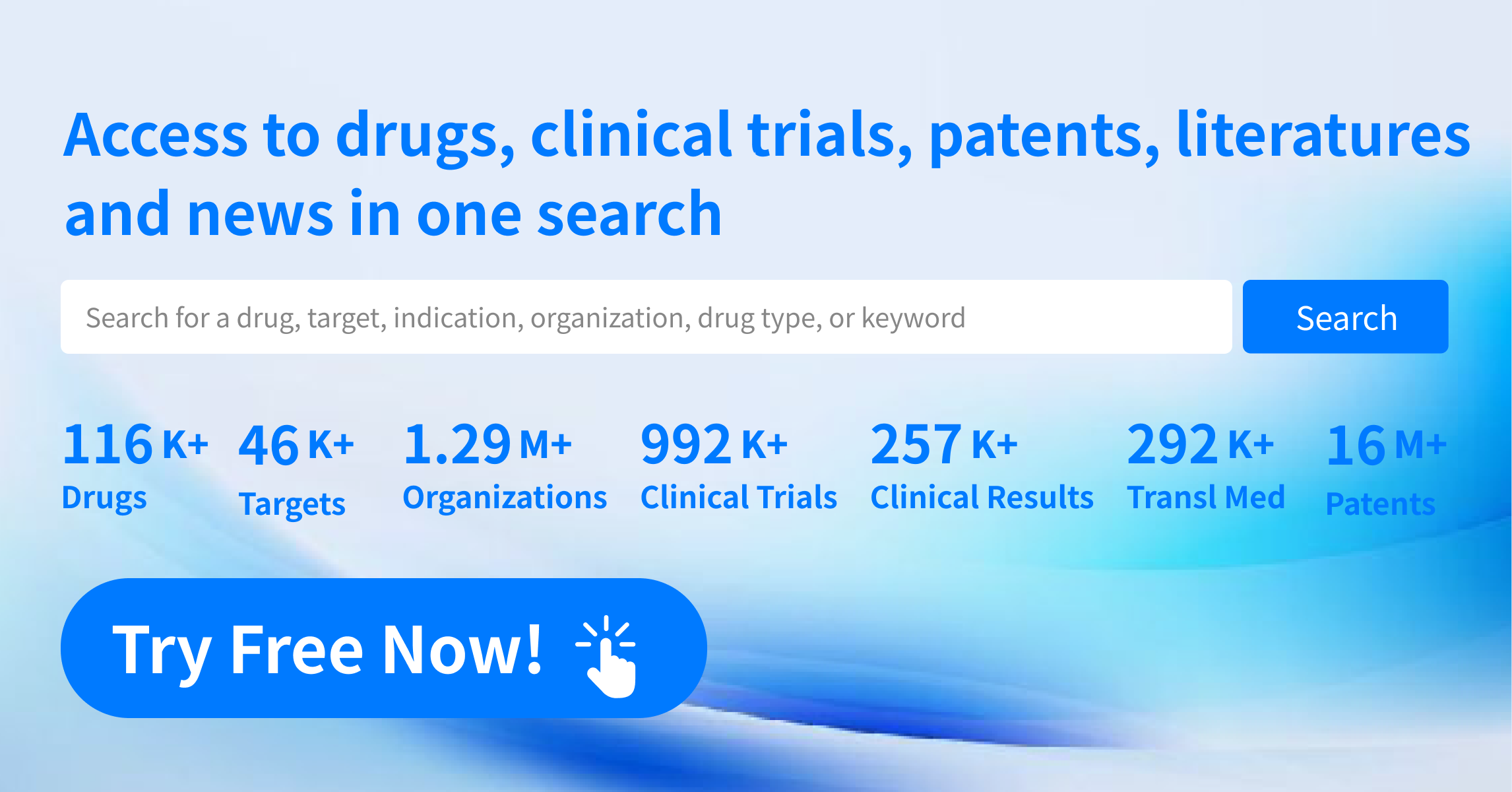Request Demo
What is Penehyclidine hydrochloride used for?
14 June 2024
Penehyclidine hydrochloride (PHC) is a medication often found under the trade name "Anar". Developed originally in China, it has garnered attention for its therapeutic efficacy in treating various conditions. Classified under anticholinergic agents, PHC plays a significant role particularly in alleviating symptoms associated with Parkinson's disease and other neurological conditions that involve dysregulation of cholinergic systems. Research institutions, predominantly in China, have been at the forefront of exploring its potential applications, with clinical studies showcasing promising results. Current research continues to delve into the broader therapeutic applications of PHC, including its use in respiratory disorders and gastrointestinal ailments.
Penehyclidine hydrochloride Mechanism of Action
The therapeutic action of Penehyclidine hydrochloride can be primarily attributed to its anticholinergic mechanism. PHC functions by selectively binding to muscarinic acetylcholine receptors (mAChRs), specifically the M1 and M3 subtypes, which play a crucial role in modulating neurotransmission within the central nervous system and peripheral organs. By antagonizing these receptors, PHC effectively inhibits the parasympathetic nervous system's overactivity.
In Parkinson's disease, for instance, there exists an imbalance between dopamine and acetylcholine in the brain, resulting in motor symptoms like tremors, rigidity, and bradykinesia. PHC’s action on mAChRs helps restore this balance by reducing acetylcholine activity, thereby alleviating these motor symptoms. Furthermore, its effect on M3 receptors in the respiratory and gastrointestinal systems can lead to reduced bronchial secretions and relaxed smooth muscle contractions, offering relief in conditions like asthma and irritable bowel syndrome.
How to Use Penehyclidine hydrochloride
Penehyclidine hydrochloride is typically administered orally in tablet form. The dosage and frequency depend on the condition being treated and the specific needs of the patient, as determined by a healthcare provider. For example, in the treatment of Parkinson’s disease, a common starting dose might be a modest 0.5 to 1 mg taken once or twice daily, with adjustments made based on patient response and tolerance.
The onset time of PHC can vary. For acute symptoms, patients might notice relief within 30 minutes to an hour after ingestion, with peak effects generally observed within 1-2 hours. The duration of action can extend for several hours, making it suitable for both scheduled doses and as-needed relief in certain cases. It's important to adhere strictly to the prescribed dosage and frequency to avoid potential adverse effects and achieve optimal therapeutic outcomes.
What is Penehyclidine hydrochloride Side Effects
Like any medication, Penehyclidine hydrochloride can cause side effects, some of which may be dose-dependent. Commonly reported side effects include dry mouth, blurred vision, constipation, and urinary retention, which are typical of anticholinergic drugs. These effects arise due to the blockade of muscarinic receptors in various tissues, leading to reduced secretions and smooth muscle relaxation.
In some cases, patients may experience more severe side effects, such as confusion, hallucinations, and memory impairment, particularly in elderly populations or those with pre-existing cognitive disorders. Cardiovascular side effects like tachycardia and palpitations may also occur, necessitating careful monitoring in patients with heart conditions.
Contraindications for PHC use include conditions where anticholinergic effects could exacerbate symptoms or be harmful. These include narrow-angle glaucoma, myasthenia gravis, severe ulcerative colitis, and obstructive gastrointestinal or urogenital disorders. Additionally, caution is advised in patients with a history of cardiovascular disease, due to the potential for arrhythmias and other heart-related side effects.
What Other Drugs Will Affect Penehyclidine hydrochloride
Drug interactions are an important consideration when prescribing Penehyclidine hydrochloride. Concomitant use of other anticholinergic medications can amplify the side effects, leading to increased risk of severe anticholinergic syndrome. Medications such as antihistamines, tricyclic antidepressants, and certain antipsychotics should be carefully evaluated for potential interactions.
Moreover, PHC's efficacy can be influenced by drugs that alter gastric pH or motility, potentially affecting its absorption and bioavailability. For example, proton pump inhibitors or antacids could impact the onset and intensity of PHC’s effects.
Patients on medications that have anticholinergic properties, like those used in overactive bladder treatments or some respiratory drugs, should be closely monitored. Additionally, drugs that affect liver enzymes, such as certain antifungals and antibiotics, might influence the metabolism and clearance of PHC, necessitating dose adjustments.
In conclusion, Penehyclidine hydrochloride is a potent anticholinergic agent with significant therapeutic potential in treating conditions like Parkinson’s disease and respiratory ailments. Its mechanism of action, rooted in muscarinic receptor antagonism, allows it to modulate neurotransmission and alleviate symptoms effectively. However, careful consideration of its administration, potential side effects, contraindications, and drug interactions is crucial to ensure patient safety and optimal therapeutic outcomes. Ongoing research continues to explore the broader applications of this versatile medication, potentially expanding its use in clinical practice.
Penehyclidine hydrochloride Mechanism of Action
The therapeutic action of Penehyclidine hydrochloride can be primarily attributed to its anticholinergic mechanism. PHC functions by selectively binding to muscarinic acetylcholine receptors (mAChRs), specifically the M1 and M3 subtypes, which play a crucial role in modulating neurotransmission within the central nervous system and peripheral organs. By antagonizing these receptors, PHC effectively inhibits the parasympathetic nervous system's overactivity.
In Parkinson's disease, for instance, there exists an imbalance between dopamine and acetylcholine in the brain, resulting in motor symptoms like tremors, rigidity, and bradykinesia. PHC’s action on mAChRs helps restore this balance by reducing acetylcholine activity, thereby alleviating these motor symptoms. Furthermore, its effect on M3 receptors in the respiratory and gastrointestinal systems can lead to reduced bronchial secretions and relaxed smooth muscle contractions, offering relief in conditions like asthma and irritable bowel syndrome.
How to Use Penehyclidine hydrochloride
Penehyclidine hydrochloride is typically administered orally in tablet form. The dosage and frequency depend on the condition being treated and the specific needs of the patient, as determined by a healthcare provider. For example, in the treatment of Parkinson’s disease, a common starting dose might be a modest 0.5 to 1 mg taken once or twice daily, with adjustments made based on patient response and tolerance.
The onset time of PHC can vary. For acute symptoms, patients might notice relief within 30 minutes to an hour after ingestion, with peak effects generally observed within 1-2 hours. The duration of action can extend for several hours, making it suitable for both scheduled doses and as-needed relief in certain cases. It's important to adhere strictly to the prescribed dosage and frequency to avoid potential adverse effects and achieve optimal therapeutic outcomes.
What is Penehyclidine hydrochloride Side Effects
Like any medication, Penehyclidine hydrochloride can cause side effects, some of which may be dose-dependent. Commonly reported side effects include dry mouth, blurred vision, constipation, and urinary retention, which are typical of anticholinergic drugs. These effects arise due to the blockade of muscarinic receptors in various tissues, leading to reduced secretions and smooth muscle relaxation.
In some cases, patients may experience more severe side effects, such as confusion, hallucinations, and memory impairment, particularly in elderly populations or those with pre-existing cognitive disorders. Cardiovascular side effects like tachycardia and palpitations may also occur, necessitating careful monitoring in patients with heart conditions.
Contraindications for PHC use include conditions where anticholinergic effects could exacerbate symptoms or be harmful. These include narrow-angle glaucoma, myasthenia gravis, severe ulcerative colitis, and obstructive gastrointestinal or urogenital disorders. Additionally, caution is advised in patients with a history of cardiovascular disease, due to the potential for arrhythmias and other heart-related side effects.
What Other Drugs Will Affect Penehyclidine hydrochloride
Drug interactions are an important consideration when prescribing Penehyclidine hydrochloride. Concomitant use of other anticholinergic medications can amplify the side effects, leading to increased risk of severe anticholinergic syndrome. Medications such as antihistamines, tricyclic antidepressants, and certain antipsychotics should be carefully evaluated for potential interactions.
Moreover, PHC's efficacy can be influenced by drugs that alter gastric pH or motility, potentially affecting its absorption and bioavailability. For example, proton pump inhibitors or antacids could impact the onset and intensity of PHC’s effects.
Patients on medications that have anticholinergic properties, like those used in overactive bladder treatments or some respiratory drugs, should be closely monitored. Additionally, drugs that affect liver enzymes, such as certain antifungals and antibiotics, might influence the metabolism and clearance of PHC, necessitating dose adjustments.
In conclusion, Penehyclidine hydrochloride is a potent anticholinergic agent with significant therapeutic potential in treating conditions like Parkinson’s disease and respiratory ailments. Its mechanism of action, rooted in muscarinic receptor antagonism, allows it to modulate neurotransmission and alleviate symptoms effectively. However, careful consideration of its administration, potential side effects, contraindications, and drug interactions is crucial to ensure patient safety and optimal therapeutic outcomes. Ongoing research continues to explore the broader applications of this versatile medication, potentially expanding its use in clinical practice.
How to obtain the latest development progress of all drugs?
In the Synapse database, you can stay updated on the latest research and development advances of all drugs. This service is accessible anytime and anywhere, with updates available daily or weekly. Use the "Set Alert" function to stay informed. Click on the image below to embark on a brand new journey of drug discovery!
AI Agents Built for Biopharma Breakthroughs
Accelerate discovery. Empower decisions. Transform outcomes.
Get started for free today!
Accelerate Strategic R&D decision making with Synapse, PatSnap’s AI-powered Connected Innovation Intelligence Platform Built for Life Sciences Professionals.
Start your data trial now!
Synapse data is also accessible to external entities via APIs or data packages. Empower better decisions with the latest in pharmaceutical intelligence.


